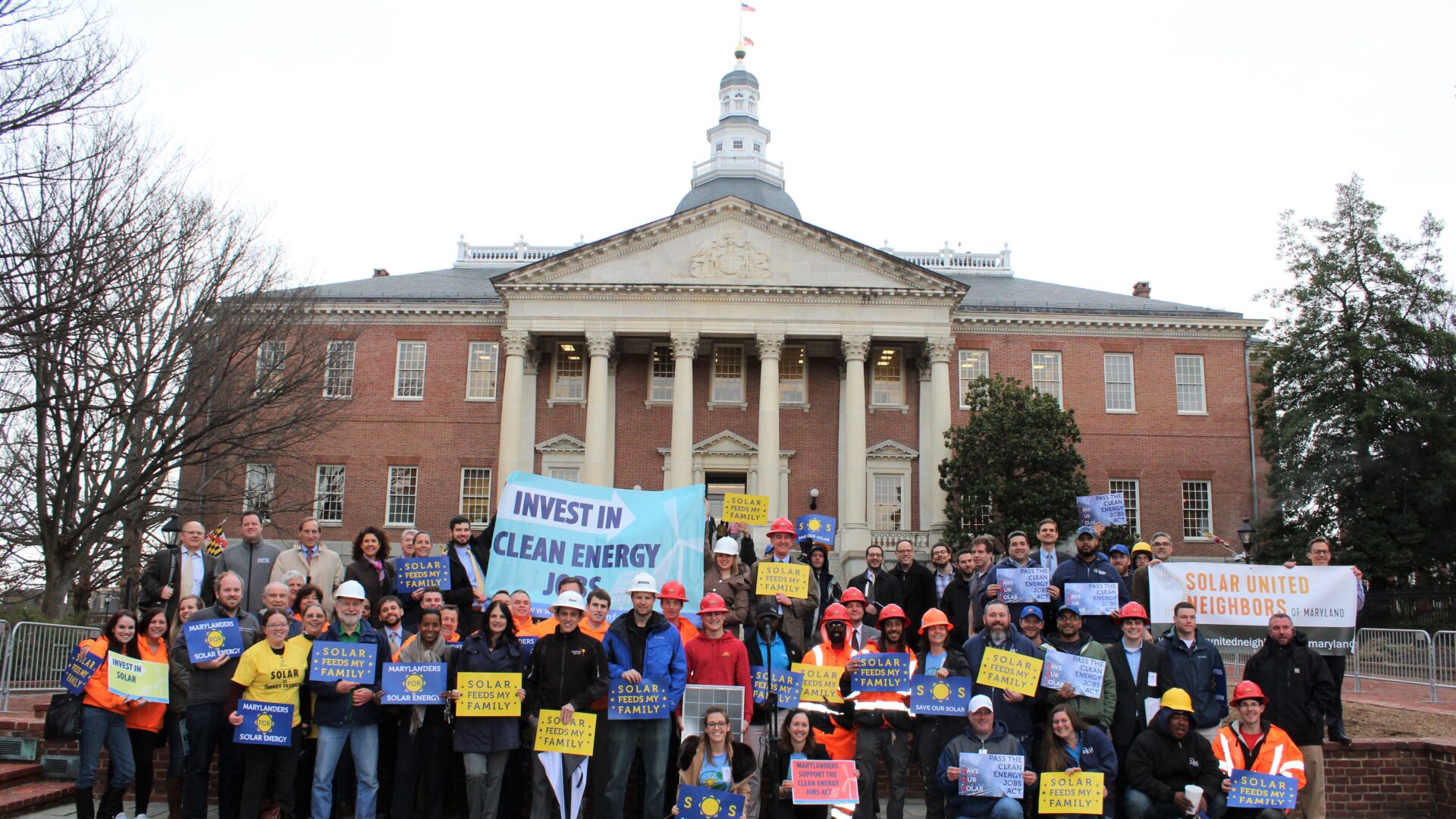Monopoly utilities’ energy plans fall short for Marylanders
- Distributed Power Plant

Energy costs are skyrocketing. But there’s hope. Last year, Maryland lawmakers passed legislation requiring utilities to create pilot projects that would credit customers who help the utilities meet electricity demand by sharing electricity from their solar, battery, or energy management devices. This system is called a distributed power plant (DPP).
Unfortunately, the pilot projects the utilities proposed fall short of an effective program. It’s a missed opportunity to enable Marylanders to benefit from a more reliable and less expensive energy system. It would also keep power and money in the hands of the utilities. Marylanders would continue to use electricity from more expensive, more polluting power sources instead of shifting to cleaner customer-owned resources. To understand why, we’ll explain how distributed power plants work, how they can benefit Marylanders, and why the utilities need to think bigger.
How distributed power plants work
DPPs connect distributed energy resources. This includes solar-powered batteries, electric vehicles, and smart thermostats. Connecting them together allows electric grid operators to call upon their generated or stored electricity at times of high demand. Participants in DPP programs are compensated for taking part. These payments encourage more people to invest in solar, batteries, and other energy management tools.
Why Maryland needs distributed power plants
DPPs lower energy costs for everyone. They do so by reducing the need to use or even build expensive peaker plants. This is critically important as the demand for energy in Maryland skyrockets thanks to A.I. and data centers. To date, Maryland and neighboring states have sought to build more gas-fired power plants and large-scale transmission lines. This approach would enrich Maryland’s utilities. It would also significantly increase utility bills and could take years to build. Conversely, the resources that make up DPPs are already connected to the grid. So, a DPP program can start operating in months, and not years.
DPP programs have already proven their worth. In July, Puerto Rico’s DPP providers successfully dispatched nearly 70,000 batteries. This contributed approximately 48 MW of capacity to the grid in response to a generation shortfall of nearly 50 MW. According to the local utility, DPPs kept the lights on in many communities across the island.
DPPs are just getting started. A report from the Department of Energy estimates that tripling the current scale of DPPs by 2030 could save ratepayers more than $10 billion in annual grid costs.
Why utility proposals fall short
Utilities BGE, Pepco, Delmarva Power, and Potomac Edison submitted their pilot program proposals to the Maryland Public Service Commission in July. The Public Service Commission is the government body that regulates utilities in the state. They have the power to approve or reject the utilities’ proposals.
As designed, the proposed programs are not large enough enough to attract significant customer participation before the utility has to report back to the Commission. The pilots will not be able to show they can be effective resources. This will make it less likely they are made permanent, ensuring that all Marylanders can benefit from DPPs. Without DPPs, Marylanders will be stuck paying more to the utilities for a less reliable energy system.
We’re waiting to see if the Commission will order the utilities to resubmit new proposals that take into consideration the recommendations that SUN and other stakeholders made, as well as those of the Commission itself.
The utilities’ proposals put the Commission in a tough position. Commissioners need to balance the need to improve these proposals with concerns that asking the utilities to fix them will cause further delays. The timeline for when these pilot programs will start is not certain, but could be by the fall of 2026.
Update: Maryland PSC responds
On October 21, the Commission released its Order in the case. The order includes many positive steps to making a strong DPP program a reality for Marylanders.
The commission ordered utilities to scale up their pilot programs. This will align with the DRIVE Act’s goal of reducing peak energy demand to save everyone money on their power bills.
Further, the commission required utilities to explicitly allow for third-party aggregator participation. This is good news. The most effective DPP programs in the country rely on third-party aggregators to facilitate interactions between customers and utility system operations.
Lastly, utilities must include additional incentives for low to moderate income customer participation. This will ensure that more Marylanders can participate in the program.
It’s not all good news. The Commission is still considering limited degrees of utility ownership of behind the meter DPP devices. This can slow down device deployment, inflate cost for ratepayers, and give utilities an unfair market advantage against third party aggregators.
The utilities have to refile their new pilots by January 21, 2026.
Stay informed about distributed power plants
Get the latest on solar straight to your inbox.
Fight for your solar rights.
Everyone has the right to go solar. Spread the sunshine nationwide and in your local community by taking action, joining events, and more.